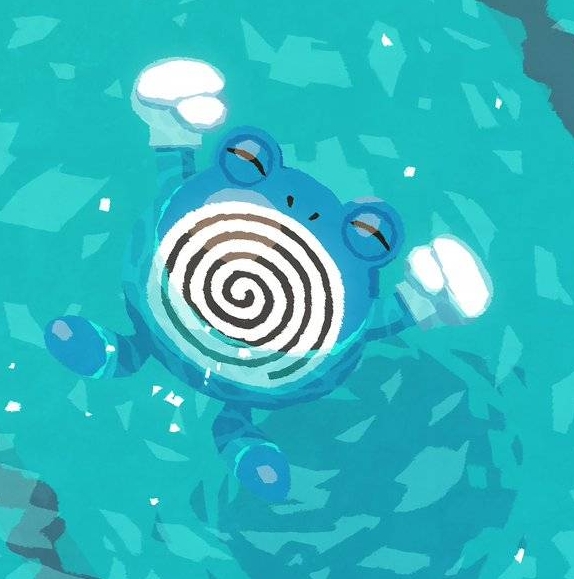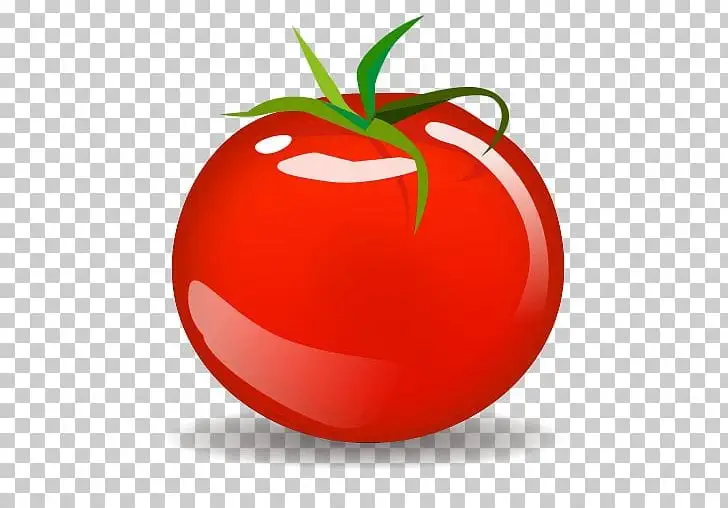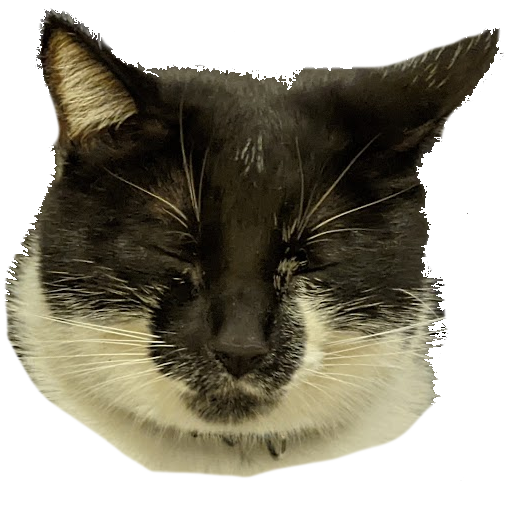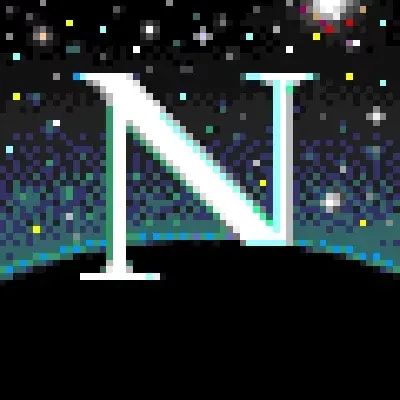Downplaying the importance of UX is one of the reasons the year of the Linux desktop still has not arrived.
If by importance of UX you mean “your program should look and behave exactly like this other program made by a corpo, because I’ve learned that one already”.
In reality The Year Of The Linux might never arrive, it doesn’t have a multibillion corporation spending multi billions in order to make Linux a default software on every computer you buy. (to pedants: Android doesn’t count)No. Importance of UX simply means advance users can customize their workflow while making it easy to use for casual users.
Kinda like Krita or Blender. Both are not perfect, but the dev are working on it, together with the community.
Even GIMP dev also working on that, they have GIMP UX issue tracker here: https://gitlab.gnome.org/Teams/GIMP/Design/gimp-ux/
“your program should look and behave exactly like this other program made by a corpo, because I’ve learned that one already”
Oftentimes established workflow is already simple. There’s no need to reinvent this from scratch. Example: Npainter and AzPainter are heavily inspired by PaintToolSAI. Inochi Creator is a clone (with unique feature) of Live2D Cubism.
Oftentimes established workflow is already simple
Not in the example we’re talking about though. Photoshop isn’t simple, nothing in it is. And for the software that is, it doesn’t mean you can’t come up with the better UX. We shouldn’t discourage people from trying to invent something better just because it isn’t what we already have.
I believe when majority of people saying “Photoshop has this, we should do this as well” are not actually saying GIMP should create a total carbon-copy.
People loves easy to use interface, not carbon copy of Photoshop, even if they don’t say that. They just don’t know how to articulate their frustration better.
When Affinity Photo emerges as actual Photoshop alternative, no one complains regarding “not being Photoshop clone” because the interface is actually easier than Photoshop, while still being advanced software.
New GIMP user complaining about interface “not being Photoshop clone” is indicator that GIMP interface is not easy to use and intuitive enough.
Great insight Nasi!!
when majority of people saying “Photoshop has this, we should do this as well” are not actually saying GIMP should create a total carbon-copy
And I see with my own eyes how some people are saying exactly that. Sometimes they wrap it into something like “photoshop is intuitive industry standard that takes zero seconds to learn and everyone is born with perfect understanding of it, and everything that isn’t that is an affront to god and actively violates all my senses”. I’m paraphrasing a bit.
That’s why I said “majority of people.”
There’s always small group of people that prefer certain software and refuse to change, they might even hate when the software gets updated. Heck, some people even still use obsolete creative softwares despite the development company is dead for almost 20 years.
I don’t know what majority of people think. To be fair, you also don’t know that. We can only guess
Ehhh flexibility is a good feature to have, but it’s not a requirement for good UX. Good UX should work for both beginner and advanced users, whether you do that through a single UI, different presets, or customizable panels depends on the use case and features available. A good music player for example doesn’t need a highly flexible UI to have good UX.
If anything, a good UX should know what tools people use most and how the rest of the market does theirs to have something that’s transferrable but also that works well with your feature set and brand vision
I’m talking flexible UI as relative to Clip Studio Paint.
The software is now an industry standard for manga, webtoon, 2D animation, and general ACG-related illustration in Asia. It was so good that there’s no other alternative that have it. Not even Photoshop or Krita.
I read that Krita dev also agree that it will be nice to have it.
There’s a ton of unique workflow only be possible with it.
I think the difference is with their software you can play around the UI and figure out things by intuition and trial and error
The same thing is not enough in FOSS in many cases. Like for ex, drawing solid shapes in GIMP
For three years I worked teaching computers to adults, and for four years I was a system administrator/helpdesk for a big office.
I can absolutely assure you, from my experience, there is nothing inheritly easier or harder to figure out in close source software vs foss, in windows vs linux, in gui vs console, in Photoshop vs Gimp.
The only difference is, what did a person encountered before. The idea that you can give a person photoshop and they will draw you a sold shape, but you give the same person gimp and they will not be able to never stood up to my experience with probably thousands of people.I for one have never used Photoshop but I used to use Gimp occasionally for some semi-technical markup and annotation. I remember being baffled by how to make a hollow circle, as opposed to a solid one. I kept forgetting the process so I had to look it up every time. Nowadays I just use canva since I don’t want to analyse menus and tool options every time. I don’t have to use Photoshop to say that Gimp’s UI can be better. Anyway, I also use Audacity extensively and although it’s not as outstanding of a case as Gimp, the older versions were a pain, nowadays it’s much better but still plenty to improve (I have not used other audio editing softwares)
Then again I learn software by intuition and exploring menus (rarely I go to read the manual, as do majority of the people I imagine), if I was taught how to use it by someone like you, maybe things would be different, but I doubt that’s how most people interact with software.
Every editing software that I ever touched, no matter what it edits, images, video, audio, had me baffled about some of decisions, small and big. For my own sanity I just accepted it as a part of life, like a bad weather.
There are definitely a lot of little things in gimp that make it hard. The lack of a shapetool is one(yes yes it’s not a drawing app but a basic edition helps) and other things like adding text with a black outline or shadow. After literally decades they finally added in a way to make it easier to image macro text in. The old way involved several submenus and I know I couldnt figure it out on my own without a guide.
I know sometimes people come into an opensource ecosystem and complain that everything is worse because they arent used to it, but at the same time there are a lot of open source programs that are very rough around the edges and the developer cant see it because they know the program inside and out so of course it’s intuitive that this feature is burried in here and this feature way in there.
deleted by creator
That is NOT at all what people are saying. They’re saying that glueing together 15 different UX paradigms into a program is not as intuitive as something designed before it was coded by people with expertise in exactly that. Design is real no matter how much you don’t want it to be. This attitude is directly hurting open source software.
Now you’re just saying words.
deleted by creator
That’s what I mean. You used photoshop professionally, you are used to its interface, you want everything to have the same interface so you don’t have to learn a new one. It’s normal, we all are like that. The problems start when you try to hide it behind words like “intuitive”, “industry standart”, and “good for everyone”
deleted by creator
But that’s like you know, your opinion, man.
What Photoshop is, is a more feature-full app, that’s fore sure, but all the claims of it being better at workflow only come from people who learned it already. It might be true, but it also could be Stockholm syndrome, there is no way to evaluate that, really. 20 years ago I was shit at coding, now I can do in an hour what I was able to do in a month back then. That’s because C++ perfected its workflow, and for no other reasons.
I am not a graphical guy, I only use Gimp for a number of limited uses, but I used it a lot for that, and I’m very efficient in what I do with it. If I open Photoshop, it will take me 20 times more time to do the same. But I know for a fact it’s not because of some inherent beterness of one over the other.deleted by creator
i used to literally use it for work
I guessed that, and that was the point of my comment. It’s impossible to tell, do you and your fellow professionals like it better, or did you just got used to it so much and don’t want to learn a new one. It’s not impossible to imagine - because it happens frequently - that there is an app with measurably better UI, that people don’t want to adopt. I’m not saying Gimp is that, personally I think all of them are terrible, all in their own unique way, and I don’t know if it’s possible to make a good one for this application.
When I worked as a sysadmin, I saw this happening all the fucking time. Hundreds of people prefer doing something in 50 clicks instead of using a new app that allows doing the same in 10, because previous way is ingrained in their muscle memory, and they absolutely, positively convinced that the old way is strictly unmistakably better, and they would fight me with deadly force so they could retain their old ways.
After that, I really don’t believe in people’s objectivity when it comes to that. I don’t think people can tell what is “better UI”.When are language models gonna be able to help there - a couple are doing such a good job regurgitating aesthetically acceptable draft web designs (stolen though they may be). They even figure out some logic along the way.
Anybody know of any existing LLM-driven UX enhancement plans on any open-source projects?
Removed by mod
Valve sells all of its computers with Linux on it, no?
They don’t sell all-purpose computers, they sell gaming systems that run Linux underneath. The regular user never has to interact with the OS
They also don’t sell that many of them.
Some quick googling says that Valve has sold nearly 4 million decks, which is pretty good.
Lenovo sold ~62 million computers last year alone. And they only make up ~1/4 of global market share
I guess all valve has to do is release steam machines again and then what? Suddenly the year of the Linux desktop isn’t here?
We’re talking about regular users having Linux as their operation system, not what happens under the hood of specialised machines. Steam machine user doesn’t run Linux, they run Steam.
Ah you’re right, it just cannot happen with a steam machine.
They don’t run Windows they run Explorer.
Linux is a kernel. They run Linux.
Or do you mean “they don’t run KDE/Gnome/LXDE”?
What I mean, they don’t interact with the OS. They only interact with Steam app, and it basically doesn’t matter what it runs underneath. When we’re talking about users adopting Linux it doesn’t count.
The year of of the Linux happened long ago. However we fail to recognize it, because wasn’t exactly what we were expecting. Most super computer is TOP500 as well as servers and majority of portable devices in the world are powered by the Linux kernel.
If the definition of Year of Linux was based on having astonishing UX then, this is probably something that will never happen.
We’re talking about home computers, regular users running their personal OS.
Not necessarily, but humans are creatures of habit. If your app doesn’t follow existing patterns, you better have a good reason for it.
It is true however that UX research is pretty poor on Linux, outside of say Gnome, but I think Linux apps could also take notes from market leaders and see what works from them and why.
It’s not always just a spreadsheet comparison of features, it’s considering the UX for different screens and user journeys and comparing them to one another.
You kidding me? Gnome has the worst UX of them all. The UI is kind of OK, but the UX is fucked beyound repair.
I disagree, they’ve got a consistent UX framework across the board, inputs are clear, navigation is the same across gdk apps. Is it consistent with other DEs? Not quite. But all gnome apps are easy to use, have pleasing UIs and generally share patterns that make it easy to see them as part of the same family even if an app is third party.
I agree on consistency. It does have vision and it is consistently implemented.
It has different problems. It doesn’t play well with apps written not for it, it doesn’t allow for a good deal of customisation, and full of bugs and questionable decisions. All the UI stuff is subjective, but bugs and unresponsiveness isn’t.Eh can’t really blame it for not being more open I think to customisation, it is an issue but not really a UX one I think. Any UI could be faulted for that then, not being customisable enough. As for apps not written for it again, not something they have control over. Could say the same about any DE, or even Mac or windows when they use non standard blocks
but not really a UX
What else could it be if not UX. Not being able to setup a shortcut for the keyboard layout change without a bunch of bullshit hoops is an eXperience I have as a User.
Any UI could be faulted for that then
Yes, it’s a metric by which we measure the experience. Sometimes things should and could be easily customisable, and if they aren’t, it’s a fault of the UI.
As for apps not written for it again, not something they have control over
If they’re making a window manager, they need to consider apps that user might run with this window manager. If for example a browser doesn’t render half of the internet correctly because they added an unexpected rendering conventions, it’s a shit browser. Same could be said about desktop environment.
Other DE expected to run apps, Gnome expects that you write your app with Gnome in mind, that’s a big difference.
Nonesense. There is no easier to use and more functional desktop with great user experience than Linux. Been that way a long time. People are just used to poor UX and want more of it.
Edit: I would love to hear from the downvoters how windows, with its constantly changing interface, ads, poor file manager and poorly thought out workflow design is somehow better than linux. And stick with win 11 as that is the standard now.
As for Mac, talk about confusing. Where are your files? What is happening at full screen, what menu is doing what? I will say macs are great when you get used it, especially if you use keyboard shortcuts.
More downvotes for the truth. I have taken people who have barely used a computer before and tried them on Linux or windows. Windows is always a mess and does things in unsuspected ways or is missing a basic feature.
Linux works just fine, and out of the box from any current distro the environments are pretty much ready to go. That is just the truth.
There is no easier to use and more functional desktop with great user experience than Linux.
Ignoring the fact that you make it sound like Linux has a single unified desktop experience…
I’d love to hear your reason for thinking that. I’m a Linux fanboy and even I’m smelling the bullshit.
True. But each of them are more or less polished enough for any user.
I mean pick one.
Give me the argument that this isn’t true.
There are five different file pickers on my system and I never know which application uses which one, or if my bookmarks will appear in them, or if the dialog will respect theming or display icons from a light theme on a dark background. Speaking of theming, it’s a shitshow. QT and GTK apps never look even similar, and the existence of Adwaita isn’t helping. If you want a flatpak app to use your preferred cursor, you have to manually grant it access to additional paths, then it’s a 50/50 chance. There is massive feature fragmentation between Wayland compositors, especially with GNOME, the “user-friendly one” dragging its feet (pun intended). We didn’t even have a functional on-screen keyboard until recently in Plasma. Xorg wasn’t any better – you had to choose between high input latency (compositor on) or massive screen tearing (compositor off), and it was a maintenance nightmare. But let’s not forget about audio either: the first time I tried to switch to Linux ~2016, I could never get PulseAudio to work reliably.
These are only the issues I’ve personally come across. I’m sure others could add to the list. Having a preference of desktops is fine and I would never deprive you of that right, but saying that the Linux desktop experience across the board is “easier to use and more functional” than everything else, and especially claiming it has “been for a long time”, is untrue, and fucking stupid. That’s why you’re getting downvoted.
And don’t you think I didn’t notice how you never actually presented any arguments for your claims.
There are five different file pickers on my system and I never know which application uses which one, or if my bookmarks will appear in them, or if the dialog will respect theming or display icons from a light theme on a dark background
I have a rolling desktop for the past 5 years and a laptop installed for the past one year on a stable release. I have none of that. Bookmarks? What do you mean by bookmarks and file browsers? I will agree that in some applications the GTK save dialogs while looking the same, do have a different sort order. But guess what? Windows does this too depending on the application.
QT and GTK apps never look even similar, and the existence of Adwaita isn’t helping.
Mine are pretty much the same, cant really tell the difference.
If you want a flatpak app to use your preferred cursor, you have to manually grant it access to additional paths, then it’s a 50/50 chance.
Never seen that before. Cursor stays the same. Again, you can add packages to windows that has similar issues.
We didn’t even have a functional on-screen keyboard until recently in Plasma.
That may be true, I don’t know. You think the average user is going to want an on-screen keyboard? Either way Plasma has one now.
2016 - 9 years ago you had issues with Pulse Audio? I guess I have had a few over the last 20. But Windows did as well. Hell my net work card on my laptop was half speed on windows 14 years ago, when in linux it worked fine.
I stand by what I said. You can make windows a shit show as well, hell the Windows pushed nvidia driver update this summer to friends computer meant all games go to black screen. Had to unsintall drivers, do a regedit, a little powershell and it was back. Yeah that was fun. Point is you can bork any computer.
I have done nothing with this laptop I am typing on except update it and add software. Everything is sensible: packages are organized. Files are were I want them and put them. Unlike windows I have a consistent and easy to use settings tool. I have a package “store” that also unlike windows doesnt try and override my choices.
There are no ads, no XBOX live icon that wont go away without hidden settings, no push to get me to a new account online just to use my computer, no regedit and powershell fuckery needed, no uninstall issues where if I deleted the package that created it, it wont go away. There is no co-pilot and AI crap, no MSN on the front page of my browser, no attempt to force me to use any particular browser. There is no double deep right click menus in my file manager and I have the choice of icons words or both on my dialogs. I don’t go to one settings tool and end up in a completely different one as I am making choices, like windows does. I can copy paste nearly every thing I see on screen in those dialogs too.
All the workflows are sensible. Clipboard that works out of the box and has memory, a better mouse pad with three and two finger consistency. File manager can drag and drop everywhere. Everything I do in windows is extra steps and a bit later: WHY!?
And the most important part? Everytime I take someone who really has never used a comptuer, windows confuses them. Linux confuses them too, but not nearly as much. They get it, they know what to click on and get things done in a fairly short amount of time.
deleted by creator
I’ve used MacOS for about 20 years, and it’s a shit show. But…
Where are your files?
They are in my user folder, same as every other OS. I can see them all in Finder. Root is hidden, but that’s options “tick box to display disks”.
What is happening at full screen
So what you would consider maximise is “move to new dedicated virtual desktop”, but you can also cmd+click maximise, drag to the top to traditional maximise or left/right for half screen.
I will say macs are great when you get used it, especially if you use keyboard shortcuts.
I’d say the opposite. How do I move this window to the next desktop using shortcut keys? You have to display desktops and then drag or to the desktop you want. No real shortcut for a basic feature.
Emoji picker also seems to be broken, so when adding something on a chat I have to navigate with keyboard because clicking on the emoji I want works about 50% of the time, they rest of the time it just closes the window.
Its close but when gnome is still saying “lmao bro you’re supposed to know how to use terminal to make empty files bro” and “nonono you are too stupid for mmb paste toggle” in the same breath, it will be a while.
The average user doesn’t need empty files
Also
mmb paste toggle
What’s the issue with this
Did you just seriously say the average user doesn’t need to make empty files?
When do they?
At the lowest they are making text files
Out of touch.
Mmb to paste is a simple, easy to understand option that is a simple preference that some people might like. But it’s locked away for no reason. It served as an example on how out of touch gnome philosophy is.
I’m sure having all computers in existence come by default with window and offering free stuff to students has nothing to do with it.
/s
Naaah, it’s just companies like Adobe, Autodesk and Microsoft shitting on Linux users each time they can.
Lol
dude if your ui is unusable you’re gonna hear about it.
you can’t make an open source car that has two joysticks instead of a steering wheel and talk about industry standards and vendor lock ins when people say it sucks.
I mean it’s cool that it exists for non drivers who sometimes want to jump on an open source car for a quick trip but if driving is your job then the joysticks being technically functional won’t cut it.
that doesn’t mean you have to copy everything 1:1, if people are looking for alternatives one reason might be that not everything about the standard car is great. affinity has some great differences in tools but they’re designed in a way that makes sense to pro users.
I’ve said this before but there’s a severe lack of designers in the open source space. there should be a platform that enables designers to relatively easily contribute to open source projects without learning git or whatever the fuck.
a platform that enables designers to relatively easily contribute to open source projects without learning git
Reading this made me a bit sad.
On the one hand, I understand how tools like this could be a hurdle for someone who isn’t heavily invested in their use. And on the other, as someone who has tinkered with open source projects, I know that as hurdles go, git is the first of very many hurdles that must be cleared when contributing to a large, mature GUI program like this, and it’s a pretty low one at that.It would be great if more people could contribute to and help develop open-source versions of tools they themselves use, but I can certainly see how tough it can be starting out
Not low at all. After you contribute the maintainer be like “can you rebase it all to one commit”
And then you end up force pushing and ping 4000 people
Or you accidentally close your pull request
If no conflict, GitHub has a button to squash all commits in a pull request.
Honestly just copying everything from 10 years ago 1:1 would be an improvement on most big applications.
I think there’s been lots of improvements to various small things to make that accurate. but adobe does love to regress in lots of different little ways as well.
I need to muster the energy to make a video about the affinity lineup. they have a number of new tools and features that didn’t exist before but are certainly improvements.
Open source software design sucks because they don’t have desginers (who know git) because they can’t attract designers (who know git) because they don’t have money (free and open source) because they don’t have big userbase (which can lead to more people donating) because oss software design sucks.
Downsides for sure, but it does work.
I loved my Ricochet RC car that drove with twin sticks…
I would totally drive an actual car that handled that way!
I knew someone would make this comment but that’s kind of the point. rc cars are toys after all, and it’s fine as a hobby but if professional driving would be better with twin sticks I feel like motorsports would have already adopted it.
I’ve driven mowers with twin sticks, and there’s heavy equipment that uses that control system as well. Gives you more precise movements and a 0° turn radius.
As someone who enjoys off-road adventures, I think a little twin stick rock crawler ATV would be an absolute blast to ride around on.
Have I got a D9 Cat waiting for you! Drive with those twin brake levers 10 to 14 hours a day! You will get to dig ditches and level whole mountains!
Edit to add: And drink Red Bull and eat Honey Buns while doing it too!
here should be a platform that enables designers to relatively easily contribute to open source projects without learning git or whatever the fuck.
Make it then.
Do you know how difficult it is to make software that runs, let alone runs well? Do you know how difficult it is to stay on top of the constant messages, issues, PRs, and just churn that comes alone when that particular software gets popular? And on top of that devs are supposed to be design gods too?
If you think you have the solution: build it. Be a part of the solution. The developers of GIMP can’t do everything.
genius reply. i love that in the same comment where you say devs can’t be design gods you say designers should make an entire software platform.
and no, they’re not supposed to be design gods, which is why I said there should be a platform that enables designers to contribute, which would take the burden off the devs. words must be hard.
So, benefit of the doubt time.
That’s some mental gymnastics in there but let’s see if we can get it.
So the reply isn’t actually suggesting you create the platform for designers, they are pointing out that there is a lot more to competent platform/software design than it seems, so try it yourself and find out.
If it turns out you do in fact have the answers, great, we now have the platform you described.
Chances are you’ll find out just how difficult it is to do what you are suggesting and realise that implying someone could “just” create a platform for designers isn’t particularly realistic.
so the comment is about how I might not realize that creating such a platform is hard when my comment says I don’t even understand how git works. weird. nowhere in the history of language has “there should be such a thing” meant or even implied “making such a thing is easy”, if anything it implies the opposite.
nowhere in the history of language has “there should be such a thing” meant or even implied “making such a thing is easy”
I know its hyperbole but you can’t possible back that statement up.
if anything it implies the opposite.
It doesn’t, but i agree it didn’t really imply the difficulty was high either.
I wasn’t saying the reply was correct, i was stating the intended meaning (at least as i see it).
To answer to your original post, design platforms with version control exist.
Some use git under the hood, some don’t, most don’t require you to understand git to use them.
Hopefully that saves you some time as now you don’t have to build the platform from scratch.
I know very little about GIMP or other OS design software, but does this software have a plugin system that designers could use to extend the software so they can use it how they want?
That would be another thing to look intoAlright making this really simple.
These are the interpretations of you and your words:
- you are a dev
- you think GIMP’s design is shit
- you think GIMP devs should be better at design and are worth shitting on
- you purport to have a solution
My words:
- stop shitting on devs for design
- build the solution you purport to have
Nowhere do I say “designers should write code”.
Are we on the same page now?
that’s a bad interpretation.
- no I’m a designer, which is why I’m talking about design
- yes it is
- no, devs are devs and designers are designers. I think it would be nice for designers to have more opportunity to contribute to open source projects
- having a solution is a bit generous. I just said having an easy to use platform for designers would make open source projects more approachable.
and to your words:
- I’m shitting on the design, not the devs. stop personalizing criticism it’s a terrible way to live and work.
- if I could I would
Nowhere do I say “designers should write code”.
except for literally the very previous sentence. of course you don’t realize that because you somehow assumed I’m a dev despite my comments being entirely about design and even implying that I don’t even know how the fuck git works
Are we on the same page now?
clearly not
dude it’s not my fault you’re on an entirely different book, let alone the same page
They’d didn’t say they were a dev so your whole analysis is off.
that’s not what they were saying.
They were saying there wish there was a way for designers to contribute. Git is a pain in the ass. lets be real. Important, but a pain. Its a bad UI.
Design isn’t the same as code, so the same process and repos aren’t necessarily going to help. that’s all they didn’t say anything insulting. Only that they wish there was a away for designers to contribute. Why is that hurting peoples feelings?
If we can’t criticize because we can’t make it, might as well shut up for life.
There’s constructive criticism and then there’s just yapping.
“Ermagerd GIMP devs are so shit at design” = yapping
“Just build a platform for designers” = supposed solution + it’s so easy, people are stupid for not having built this yet = yapping
Had it been, something like
I’m not a fan of GIMP’s design. It would be cool if had a way to help them. Maybe a platform to connect devs and designers? It could work like …
That would’ve been a completely different discussion.
I feel like they gave good reasons as to what the problem is and why it exists, and potentially how to solve it (making git easier to use, which I’m all for, or use something else)
You’re the only one insulting the project/devs. They were really respectful in their comment. You’re just misquoting them and making them say something they didn’t.
You’re just too entitled. Some opinions can be direct and harsh, and still be valid and constructive criticism. Grow some thick skin and get over it.
“Just build a platform for designers”
did it feel weird when you emphasized a word that I specifically didn’t say in your quote? there’s strawman, and there’s straight up lying. and your suggestion for how I should have worded it is pretty much what I said. it’s so funny, is the issue that I didn’t use enough uwus and 👉👈 emojis? lol.
Removed by mod
ok then tell me how I can fix GIMP’s UI without coding.
submit a feature request
thanks, the UI is better now
which feature request is yours?
the one you recommended
Removed by mod
git is fine. girhub sucks ass and if a I am ever directed to it then that project is dead to me.
Not only a lack of designers, but the very concept of them is held in contempt among way too many in the open-source world (like this thread even).
Legendary comment, my friend!
The problem is even if a designer contributes (say they open an issue with design feedback or even wireframes and such) developers seldom see as much value in a redesign as there is in working on features they care about, because open source is driven by developers making apps that they would use firstly.
that’s fine but there should be less defensiveness about people criticizing the design then
Krita, motherfuckers. Do you use it?
I use Krita, Aseprite, and Gimp. I must say, though, I’m loving Gimp 3. Now if we could just push past the proprietary docx plugins bullshit and make odf industry standard…
Edit: Ah, shoot. I forgot Inkscape for vector art. Shame on me… I love Inkscape.
I found Inkscape when I needed to make some diagrams, and even though that’s not really what it’s for, it blows dedicated diagram tools out of the water.
Inkscape is actually fun to use because it strikes a nice balance between easy and powerful.
My only problem with GIMP lately has been that by default it’s used monochrome tool icons which are really hard to tell apart. Which seems like a real form-over-function decision (likely made by the distribution though).
If I can recall the vid I watched on GIMP 3, the whole UI is now customizable with CSS. You could dive a bit into it and see if you can change out or recolor the icons (recoloring should be doable if they’re SVG, but you might need to decode base64, change the color and recode it into base64).
However, it shouldn’t be too long before custom UIs start pouring out. So if CSS isn’t your thing, keep checking back and see if someone has made something that ticks all your boxes!
I could change it in the settings. I just hadn’t used it in a long time and it took me a bit to realize that this default was why I suddenly had trouble telling the tools apart.
But if the differences are that big I’m probably still on 2. Looking forward to seeing what 3 will bring then :)
Wait wait. I just found something. Head to Edit > Preferences > Icon Theme and switch to Legacy.

And bam. Gimp 3 is out, though! Should already be updated if your system is up to date!
I’ve used krita at an amateur level, pretty good would recommend
deleted by creator
Yall just use Krita if you want a photoshop replacement on Linux and then stop complaining about gimp please. Krita draws circles exactly like photoshop please just use Krita and leave the gimp people alone
I use both.
Krita is for drawing. GIMP is for making memes.
I’m a huge Krita fan! But like others I mostly use it for the drawing and painting.
How is it as an alternative to GIMP? (Which I use for simple cut and pastes and that kinda thing.) I haven’t actually been able to figure out where the wall is that says “No, use GIMP for this.”
Does GIMP maybe have better filters and layer operations and that kinda thing maybe…?
Pretty much every filter I need from PS like levels, curves, unsharp mask, blurs, etc are there and I even get all of my layer styles. If you were familiar with photoshop circa cs3 era I honestly think it’s just better, but I’m a Linux user and software engineer, not a professional graphic designer or photo manipulator
I avoided it for so long and just used photopea online instead because I thought krita was just for drawing and I don’t do that. I’m sure it’s fantastic for that but I don’t draw and was so used to photoshop I didn’t imagine it’d be basically a better version of it and written in QT, but I was pretty surprised at how it’s just that
Removed by mod
Removed by mod
Under the hood I actually really like GIMP. I’m also not too bothered by there being no circle tool. My problem with GIMP is that if there were a circle tool in it, its a little too difficult to find it if it does exist.
If they had some front end re-write eventually where they just moved some stuff around and better organized the front end of the application, I think a lot more people would use it. UX/UI is really important, and I’m sure the contributors of GIMP know this as they seem to have done well to try to make the interface feel straightforward by putting stuff under menu’s and whatnot, but the location of things just seems unintuitive/non-standard compared to what every other application does.
The other issue I have with GIMP is just that its development cycle takes forever compared to most every other open source application I have seen.
Not to say there is a great answer to any of this, image manipulation/animation software is not an easy thing to program by any means so I understand why it can take forever, but I just wish there was a real answer.
In the mean time, I’ve just been trying to get by with krita, though krita really seems geared toward digital painting specifically.
A great remedy to stuff being hard to find is that you can press the slash key
/to open a command paletteThat is interesting and I did not know that. Thanks.
That is a bandaid though, it’s an abstract way of interacting with an application and you can’t really build muscle memory around it
I love krita and it is the best digital art software i’ve used for painting and i’ve used them all proffessionally. I had to tweak it the least out of all of them.
How does it compare to Procreate on iPad?
Don’t even get us started on Blender’s UX/UI design.
Blender is so versatile, and has so many applications that you have to end up with a cluttered interface. Since the alternatives have licenses that have a steep cost, I would say that putting up with a clunky interface is well worth it.
Haha, yes the feeling is similar there, though I think I personally still had an easier time learning blenders current workflow.
I’m assuming my downvotes are people who have never used blender, lol
I only see one on your previous comment, but it could be because blender has recently started getting a better reputation for usability/learnability.
6 years ago I touched it and I was horrified, but I touched it a few times this year and found they had made some good improvements.
Same here, maya is no longer on linux so I can be free of terrible, stagnating autodesk.
Blender is good but few things I use constantly are just seemingly missing and community doesn’t understand the question either.
Coming from maya where everything is on modifier key and a sub second flick of your mouse and having to use something as disgusting and alow as “hotkeys” is an adjustment. Everything but the ui is geat. Except for 3d cursor, fuck that stupid thing. I have a 3d cursor, it’s my cursor.
And lack of the x y z coordinate setter. Getting something to 000 is impossible and setting prescise pivots is a nightmare.
Not saying GIMP’s UI is great (I only use it occasionally), but efficient UI isn’t necessarily an “intuitive” UI. I.E. an intuitive UI may not be efficient for a professional that takes the time to learn it and works with the UI ~40 hours/week.
True, but I prefer intuition over efficiency when I pick something up for the first time, second time, and third time, until I eventually have a good enough understanding to begin worrying about efficiency.
There are use cases for Libre office writer, just as there are for vim, even though they are both capable of producing text documents. One is arguably more intuitive while one is arguably more efficient, but if I didn’t know anything about word processing/text editing and had to pick between the two, I would pick writer.
Same goes for anything else, and it’s also why a decent number of text editors/software support emacs/vim bindings - so that you can use the software intuitively, and then once you understand it, you can become more efficient by using modal bindings. Same goes for GIMP versus other software. The thing about other softwares in the same genre is that they can be learned relatively easily and can also be used efficiently. GIMP I find harder to learn, even if it is efficient later.
For anyone who is new who has to make a choice as well - very few people would pick vim to start out with.
Furthermore, in this instance, I do have a decent amount of photo editing experience and have used multiple softwares to do it, but even after that, the problem I have with GIMP is that a lot of this knowledge does not transfer to GIMP like it does for other software. If I learn photoshop, I can get away with using affinity, krita, corel draw, clip studio, and other software - but not nearly as easily GIMP.
I would also argue that efficiency is equally dependent upon the software as it is the task. The workflow for digital painting, animation, and photo editing are all quite different, and no one UX/UI is the most efficient at all of them. This is why most of these softwares have modular interfaces, which is good, but I simply find the modular interface of GIMP harder to use or understand versus the rest.
Yeah, for all I know, GIMP is as intuitive and efficient as Photoshop. I.e. they’re both as un-intuitive to me, and I’m not efficient in either (I probably haven’t use PS in a decade). But, I guess being intuitive is a good “hook” in regards to market share. I am a software engineer, and do prefer (neo)vim, but I guess I started out on NetBeans. I kind of see that as a level-up in regards to efficiency; not sure if that exists in other industries.
That’s a good question, I’m not too sure since I work in IT/Software as well and am currently using kakoune. I think a lot of efficiency upgrades in other industries are typically a cost gap instead of an understanding gap. For example, a carpenter could start out with a tool like a hand saw, and then later upgrade to a band saw, but they need to pay a lot more for and find space for the more efficient tool. This can kind of exist in software as well, but the funny thing is that a lot of the time these days I find the FOSS stuff better overall, which I think sets this phenomenon apart from other industries and whatnot.
Intuitively finding basics everybody starting out needs in the ui takes a backseat to the pro who is using all the shortcuts and custom workspace layouts going to adapt to the changes anyway. Especially as basically no one uses gimp professionally all day and the people who would use it are not using gimp cause it’s not intuitive.
I can’t wait for freecad to stop being just an poweful near peer and actually become an usable near peer.
Yeah, I have much more time in FreeCAD than PhotoShop. I don’t think it’s either intuitive or efficient, lol. But, I was surprised that I was able to both create model to both 3D printing, and create paths for my plywood router. In my experience KiCAD is near peer, because Altium also sucks.
People who complain about GIMP have never had to use Inkscape. Now THAT is one horribly unintuitive UI.
I’ve never been into vector graphics, but I had reason to use Inkscape recently, and I was actually surprised by how easy to use it was and how much the UI made sense.
I have used inkscape though it has been some time. I felt as though it was not super featureful at the time so the UI felt slightly barren compared to something like Adobe Illustrator, but I don’t recall having the same kind of trouble with it that I do with GIMP honestly.
I find Inkscape easier
I like inkscape but ive used AI minimally and found AI more unintuitive.
I guess it’s based on your previous experience
Hi, this complaint sounds vaguely familiar and I know it’s just indicative of that type of problem, but can you elaborate on what you mean by no circle tool?
I haven’t used GIMP in a long time but if I remember correctly there’s an ellipse tool and I think there’s a modifier that can constrain the aspect ratio so you can make circles. I might be wrong though.
I think what you are thinking of is the ellipse selection tool, and yes this exists and can be used - however I am referring to the tool class of geometric shapes which is quite common among other software. Basically it creates a vector (In most cases I think) shape with options for stroke and fill, and controls the same way that the ellipse selection tool does (constraints etc.).
GIMP does not have this, instead you have to go through a decent amount of trouble to get simple geometric shapes drawn to the screen, and at that I believe they are always raster.
Take these procedures as an example for GIMP.
https://www.alphr.com/make-shapes-gimp/
This makes GIMP difficult if you want to use it for some niche uses such as making a quick flow diagram, or a quick vector mask which can be changed later.
Removed by mod
You can replace GIMP with Blendee or Freecad and it works just as well
Removed by mod
Before they abandoned it for Gnome 3, Ubuntu’s Unity DE had the ability to search any program’s menus. Was really handy for many things, but especially Gimp.
It’s not a standard until there’s an ISO, RFC, IEEE or IEC number to go with it.
W3C
Or ABNT or DIN or (…)
We should make just one more standards agency! To include all the standards for everything!
It feels like your making a semantic argument to downplay how tight grip these softwares have on their respective industry markets.
If you are only ever considered for a job if you have Photoshop experience, and that is the normal treatment across the majority of the industry, that’s a standard that the industry is now holding you to - an industry standard if you will. It does not need to be backed by a governing body for it to still count.
My current understanding is that you will not get a job at a major CGI company by knowing Blender (though the film ‘Flow’ shows that might change going forward). You have to know softwares like Houdini, 3ds Max, Maya, etc…, if you want to be treated seriously.
deleted by creator
Vendor lock-in is bad and Adobe’s business practices are bad, no matter how you cook it. There are so many viable alternatives to Adobe stuff.
Problem is, Photoshop power users don’t often want to hear about any alternatives. GIMP is just one of the most popular culprits in this regard. That’s exactly the kind of mindset that the vendor lock-in creates.
I’m kind of happy that I stuck with GIMP when I was younger. Now, I have absolutely no fear of trying out any software that comes my way. I do most of my photo work in Affinity Photo. Don’t have problems with GIMP either, use it for some other stuff.
The only way to get people to switch from Adobe is to wait for Adobe to make the life unbearable for their own customers. Some time ago there was a huge movement for people to switch from Premiere to DaVinci Resolve because Premiere really is pretty horrible these days.
The only way to get people to switch from Adobe is to wait for Adobe to make the life unbearable for their own customers
Completely agree with this! The big opportunities to get mindshare will come completely out of the blue, and likely as a result of massive blunders on Adobe’s side.
We never know when the blunders will come, we just have to be ready and provide the next best user experience so that the free software is the “obvious” place to switch to.
As we saw from the twitter/reddit migrations, the fediverse did get a large amount of traction, but bluesky became the obvious alternative because its UI was basically the same.
And that’s fine - the fediverse is it’s own thing and many people (myself included) don’t want “adoption at all costs” - but I think it’s worth pointing out that it does hinder adoption in these big moments.
I have a lot of respect for free software projects that deliberately replicate the UI of an existing proprietary project. They make it so easy to recommend for people to switch when those moments come.
What I have seen is that once people get a taste of free software that really easily solves their problem, it makes the benefits “real” to them and they start to look for other alternatives on their own.
deleted by creator
I don’t do graphic design and only use GIMP for making memes. Could you give a few pointers, why GIMP is not usable compared to photoshop?
there was a case to be made in the past [nondestructive editing, cmyk etc], but as of 3.0(.2) the divide is steadily narrowing
deleted by creator
If you wanted to give counterexamples to your point, you couldn’t come up with a better one.
deleted by creator
So far hundreds of people are saying exactly what you do. “It’s just better, OK, shut up, I will not elaborate”.
And yeah, obviously, it’s not your job to do anything for an anonymous commenter on the internet, but you have spent the same amount of time telling us that you don’t want to provide examples, than you could just giving us two or three, and that’s not not saying something.
I doubt that to be a serious concern for companies. Especially with how marketing regularly revolves around sexualizing their messages and how things like hostesses are a thing at many trade-fairs. The CEO of NVIDIA signed a boob ffs.
Also the only time i came across the term gimp was in Pulp Fiction. If it wasn’t for that movie i wouldn’t know that it has something to do with BDSM.
But really, what are things why GIMP is rationally not suitable for industry work? Is it a lack of certain features? Is it performance? Is it an impossible to learn UI? Because in your other reply all i read was that people who are used to PS just stick with it, because that is what they are used to. Which then brings us to exactly what the meme is criticizing.
And at the monthly pricing of Adobe that switching costs only justify themselves for so long. Also a friend of mine who does photo and video stuff for weddings and events as a side-gig has been furious how having to have Win11 to use Adobe cost him 5k because his old computer was not compatible anymore.
So i am curious to understand, if there is rational reasons, why taking the shit from Adobe is worth it. Of course if certain standard workflows take 1 minute in PS and 2 minutes in GIMP that adds up over a full time job. On the other hand if professional users were to support the open source development, these issues could be addressed, creating value for everyone except Adobe.
Damn this might be the fakest reason I’ve ever heard to not support GIMP
Docker Engine, without the Docker Desktop licensing and VM overhead
Docker is a great example because podman basically is a drop in replacement.
Removed by mod
And fuck ISO for charging so much for access to them.
As an engineer: 1000% agree.
Seriously, why do I have to pay a value somewhere close to £1000 for a set of FUCKING PDFs?!?
This is ridiculous. Make money from audits, certifications, training, and conferences. You can still make absolute stacks from those. Why the fuck do I or my company need to shell out thousands just so we know what to certify against to be able to sell stuff?!
It’s a fucking racquet and they know it. But it’s either one of 3 options:
-
Find someone who’s willing to send you the PDF or log in credentials for a library service that has access to these standards.
-
Take the risk downloading PDFs from dodgy sites you found on the 5th page of duckduckgo.
-
Bend over and spread open your wallet. Because good luck getting anything delivered to a customer without it.
Removed by mod
Why is there not a Libgen or sci hub for these?
There should be a libgen, sci-hub, internet archive, and a massive torrent of ISO standards. Standards aren’t great if they are gate kept by money. Now someone will reinvent it without a profit motive, and there’s 2 standards.
-
deleted by creator
No everything in Linux has to be used through the terminal, how else will I feel elite. If there has to be a gui let’s make sure it looks like it was designed in 1995, so everyone hates it and just uses the terminal instead
Just use the terminal to send keyboard and mouse events, you hopeless noob!
wtype -M shift "A" -m shift wtype -k enter swaymsg seat seat0 cursor set_position 100 200 ydotool mousemove -100 50 ydotool click 0`In fact it’s even more efficient!
The power of Linux, in the palm of my hand
Removed by mod
I’m sorry, wayland lacks this functionality. You have to use X if you want shit that works.
Removed by mod
To give a specific example of how powerful Blender is, in geology there are very very very very expensive 3d modelling programs and then there is like… Sketchup which I guess Google hasn’t abandoned? idk… even the basic GIS software for geologic mapping from ESRI is expensive AF, especially if you want to do any fancy 3d rendering or map making.
Enter this guy

You already know this guy is cool as fuck just from that photo, but let me tell you how exactly how lowkey cool Marcus Schwander is.
(btw I have zero connection to this guy, I know next to nothing about him, I literally just found his videos from searching “Blender Geology” on youtube randomly)
His video series shows quite clearly and exhaustively how to do extremely complicated geologic mapping of complex fold belts with lots of faults using Blender. What I can’t stress enough is that the workflow he is detailing in the proprietary software world would be EXTREMELY niche, require exhaustive licensing and setting up payment and getting software keys… blah blah blah and ultimately it would be a very expensive workflow, possibly requiring software licenses that cost thousands of dollars or more (I am not kidding). On top of the prohibitive cost, any kind of documentation, additional plugin development, or content creators who make tutorials about how to use the tools is an order of magnitude rarer for those tools because access to the tools in the first place is so prohibitive (and is usually only along narrow circumstances, not the kind of situation someone would organically decide to make a youtube tutorial channel about a software that costs $30,000 a license necessarily). In contrast, try searching for “Blender tutorial” in youtube and just take a cursory glance and the absurdly exhaustive amount of resources out there about learning Blender.
I have been teaching myself Blender because I want to make similar tutorial videos because it is ridiculous to me idea that in 2025 geologists don’t have an open format to visualize geologic structures and map them in a natural 3d environment that can be then shared with other geologists, in a established non-proprietary format that a geologist can ensure that any other geologist can open and view the model/data themselves, because again if you have a computer you can get Blender…
I am firmly of the belief that Blender should be taught as a basic part of a Geology curriculum along with a GIS class, not a primary focus or anything, but the tool is so general and so broadly useful that I think we owe it to future scientists to teach everybody we can how to use Blender.
As a last point, I want to emphasize that I am not suggesting using Blender to make cool fancy cinematic visualizations of Geology because it looks cool, or suggesting trying to do lots of complex modelling and computation in Blender instead of a GIS software, those are both awesome uses of Blender but what I am suggesting is that by simply teaching the next generation of Geologists how to use a 3d modelling software just for the simple purposes of giving them a tool to sketch out ideas or explore a geologic map from a 3d perspective (which can be useful ESPECIALLY when talking to other people about specific geologic structures that are difficult to explain without a 3d perspective to point to) Blender is going to forever change how Geologists use computers to do Geology.
It is a cool moment because on the flip side… there is a LOT of money in Geology and I think the Blender community could and will absolutely find serious, sustainable long term funding from Geology companies and academia associated entities that could massively bolster development capability and funding security.
Blender is great after a decade of pro maya use. Ux is nowhere near as good but man, its like stepping into the contemporary times from the middle ages.
deleted by creator
I have no experience in c4d or maya back then as back then I was experimenting with milkshape.
Maya used a clever rose menu where you hold down a modifier key and right mouse button and you can navigate all but the more uncommon commands without moving any of your hands. A complex command requiring a hotkey or multiple menus ends up being a sub 1cm movement engrained in your muscle memory and maybe a modifier key.
And that movement is very easy to learn and memorize thanks to the design. I have to this day never seen an ui done better than maya.
Vendor lock in is the reason I went to a fully open source workflow like fifteen years ago. When you rely on these companies for tools, they own your work. They can jack up prices, change TOS whenever they want, paywall features, train AIs on your work, and jerk you around on a chain at their whim. I don’t mind a little jank or having to do some workarounds for a certain result to keep my freedom. And also, when a new release comes out that fixes an issue ive been having, I feel grateful! In the closed ecosystem you feel entitled and resentful and powerless. It’s not worth it.
I’m most of the way there except jet brains… I just don’t have it in me to spend the years it’ll take to become as familiar with a different tool.
My experience with Jetbrains was that they did not rely on vendor lock-in, but on actually making a product worth paying for. I could move my projects away from their suite easily, the build tools and scripts where all third-party open-source. I just didn’t want to.
But perhaps things are different in other spaces. I can imagine using Kotlin might lock you in more.
BUT I CAN

Is it possible to learn this power??
Removed by mod
I was going to make a gif tutorial but I screwed up the recording and I’ve lost all motivation.
File, New, set resolution multiple of 1000, like 2000x2000
View, Show Grid
View, Snap to Grid
Image, Configure Grid, set pixels under Spacing to desired height, if aspect ratio is checked it will automatically adjust the width to match, like 50x50 for example
Zoom in towards center, click and drag vertical and horizontal ruler to the center using the location value on the bottom left
Create first transparent layer
Select brush tool, the big circle brush, and set size to 1000 and click at the center
Select eraser tool, set size to 960 and click center
New layer
Brush to 700, center
eraser to 670, center
New layer
brush to 60, between rings
eraser to 40, on new dot
New layer
Using brush at size 20px, click and shift click to create lines, draw a square and a right triangle in the top-left quadrant in the centermost circle by connecting points on the rim.
Select every layer, copy and paste
With new layers selected, select all
Transform, Rotate, ensure that the centerpoint is the actual center with the on screen reticle, and rotate the circle 90 degrees. Repeat process but rotate 180 degress.
Export image, you’re done.

EDIT: I guess I didn’t really explain Whitespace Utilization, you can use a white brush instead of eraser to cover the layer beneath.
Once you’re ready to export, flatten image to a single layer and then under color, color to alpha, white should already be selected
Add a new layer, white layer, move the layer to the bottom of the stack
Done
This should be done in inkscape or krita.
Nah fuckem I liek GIMP
Yeeh gimme a bit
That’s beautiful. Card backs?
Yeeh
Cool design.
Hey, I was a GIMP convert even during the long dark ages of GIMP where you couldn’t do any kind of bulk layer selection or moving or lots of maddening things… and you know what I kept fucking using it because it was always there for me, ready to help me make a shitty meme.
GIMP has recently gotten MUCH better though, it is a straight up beast now.
I agree.
Just recently, I used GIMP 3.0 to create what will become a sticker on the side of a dozen hockey helmets.
It was a small project but it probably went back and forth a dozen times as each version delivered sparked new ideas or new questions on what was possible. Layers, filters, alpha channel, Smart Selection, and working with text and font outlines were all essential.
I don’t do all this stuff all the time. There is no way I would ever pay for Photoshop. Yet, my standard Linux install had everything I needed to get it done. And it was not that hard.
Truly amazing when you think about it. We are all so entitled.
We are all so entitled.
That’s exactly my issue with GIMP. We are all so entitled, even GIMP devs.
You don’t want to include a feature to draw an editable circle/square/polygon? Fine, but then don’t get superdefensive nor “counterattack” when people ask you about this feature. All in all, pretty much every other image manipulation program has it, so it’s understandable people wonder why GIMP doesn’t have it. I for one still can’t wrap my head around why this is a no-no for some people. It doesn’t make any sense.
When I was majoring as graphic designer I used to use GIMP for a bunch of stuff, even played with python-fu and saved me some time I never would have saved with Photoshop or some shit like that, but even back then they always answered to everything some variation of “we are short on resources”. Well at that time Krita (which was even called Kpaint) had even less resources than GIMP and look at them now.
Truly amazing when you think about it. We are all so entitled.
Almost as entitled as the corporations who want to charge us rent to do something relatively simple like this on a modern computer, and have actively attempted to undermine general accessibility to tools like this in order to profit more.
Eli5?
There is a practice where software companies will either provide their software to schools and colleges for free or will pay schools and colleges to use their software. This leads to the students using this software, learning that software’s sole paradigm, and essentially forces them to use that software going forward because of how difficult it is to shift to another software with a different paradigm. This is Vendor Lock-In. The vendor locks you into their software.
This leads to all future workers being trained in that software, so of course businesses opt to use that software instead of retraining the employee in another. This contrasts with the idea of what an ‘industry standard’ is. The name suggests that it’s used in the industry because it’s better than other software, but in reality it’s just standard because of lock-in.
This is how Windows cornered the operating system market - by partnering with vendors to ship their systems with Windows pre-installed.
My kids use Chromebooks at school. What I call “Word” they call “Docs”. It’s very clear why Google gives this operating system away for free.
For decades Apple paid schools to teach on their computers. In the 80s and much of the 90s, all you’d find in computer labs was Macs.
It didn’t work because PCs were just better for businesses at the time.
PCs were just better for businesses at the time.
How so?
Software mainly. Apple made software companies pay a license to release software on the Mac, so most companies chose to release on PC exclusively.
Your description of vendor lock-in is obviously solvable by developers making a competing UI and workflow similar to the most popular software, and enabling new features under another menu. That said, there is obviously minimal interest in doing so.
This is UI. UI is not vendor lock-in. Lock-in costs users money to break out of, not developers.
Oh yeah, when a school receives a hundreds of computers with Windows preinstalled, they obviously consider spending hundreds of man-hours on installing a different OS, but decide against it because Windows has quantifiably superiour UI. Because that’s exactly how it works.
Have you ever heard of SAP? Salesforce? UI quality and UX workflows have never been the deciding factor for choosing a piece of software in a corpo setting. It’s money and whose friend is pocketing it. That’s all that CFO make decisions on. Windows became a standard because Microsoft literally paid schools to buy computers with it, in exchange all schools had to do was let them conduct their indoctrination workshop, disguised as a “how to use a computer” course. But of course they exclusively talked about Windows.
That entire solution immediately falls apart when the paradigm is patented by the vendor, who immediately sues any competing software using UI elements even vaguely similar to theirs. This has been going on for decades, and the three things that usually happen are that the competitor either gets bought up, sued out of existence, or has to keep their UI different enough that there is little-to-no bleedover between the userbases (and usually starves to death from too little revenue).
It’s an thing people used to say when they wanted to justify not using the software gimp
Removed by mod
Yup and honestly the hostility those users get when mentioning it is the same reason Linux doesn’t get more traction in the mainstream.
When a lot of users expect software to work in a particular way and it doesn’t, you change the software - if you insult, belittle or otherwise expect the user to change their working habits then you’re going to have a bad time and be all shocked Pikachu when the user doesn’t use the software.
Apple is (was lol) the most valuable company on the planet because they understood that the user experience is the absolute most important thing. They are the textbook example of vendor lock in and yet people flock to them because “it just works”.
the hostility
“Hey, why this free software I tried once IS SO SHIT AND UNINTUITIVE AND EVERYONE WHO MADE IT IS PLAIN STUPID AND WRONG, NOW HELP ME IMMEDIATELY YOU FUCKING NERDS. Man, nobody fixed my problem immediately, what a hostile envoroment”.
you change the software
Oh, so that’s what big corpos were doing this whole time? Damn, what a cool environment that should be, you buy software and it behaves like you want it to be, and if it doesn’t, you complain to the corpo and it fixes it for you immediately.
Apple is (was lol) the most valuable company on the planet because they understood
that you don’t need to sell software or hardware, you need to sell brand recognition, feel of premium exclusivity, and smug satisfaction of being better than the plebs. And as long as your shit doesn’t crap out tremendous amount, you can ruse the rubes.
This is the hostile attitude they were talking about
They didn’t came for help with their problem or whatever, they came to argue about their favourite way to organise software development, brandishing hostility and accusations from the beginning. Different situations, really.
I think your response is unintentionally proving my point lol
Maybe, but people who demand volunteers to provide more labor than they are willing to also are the problem. You don’t seem to grasp the nature of volunteering. It isn’t meant to serve you—volunteers do what they want when they want to because you won’t do what they want. They have your same frustrations: I want it to do X! So they do it.
I’ll also say this: arguments like yours have been used for decades while Linux is getting more and more popular. Maybe, just maybe, you’re wrong.
Linux is getting more popular because corporations like valve have put the effort into refining the user experience. I’m not just talking about a pretty UI either, I’m taking things like proton that makes playing games on Linux as easy as playing on windows.
I’m not saying there aren’t people out there that demand free labour from volunteers - of course there are; I maintain and have contributed to a few open source projects myself so I know all too well what that’s like.
However, I would say those folks are a very small (albeit vocal and annoying) minority. The vast, vast majority of users simply dismiss Linux/GIMP/Whatever because it’s not suitable for them. They don’t go screaming into GitHub demanding features, they don’t post on Lemmy that the software sucks or otherwise create a fuss, they just gravitate towards the stuff that works for them (usually something proprietary) with the least friction.
And I think you missed the point of my response
Yeah you’re right, it’s the users that are at fault.
Agree, Adobe products always leave me frustrated, and my experience is universal.
I kept seeing recommendations of gimp as a photoshop alternative, so I installed it and… I was convinced that I must’ve downloaded the wrong thing. It didn’t even look like an image editor to me. I’m sure it’s a wonderful program, maybe the UI got better since then, but I ended up much happier just using paint.NET
Circle select + Shift-PaintBucket
People really love making storms out of water glasses.
For anyone thinking this is the solution, it’s not. This technique produces a rasterized circle in a destructive editing workflow. What people that are complaining actually want, is a non-destructive tool, like the planned shape tool that will let everyone easily make vector shapes, like circles. It is part of the ongoing plan to add non-destructive workflows to GIMP, it’s a game changer and the gimp team is doing great progress, so kudos to them.
Agreed. They have a lot of the required plumbing now. There are some non-destructive editing workflows in GIMP.
I think holding back 3.0 for so long was a mistake. It no longer matters though. It is out now and it can be improved dramatically without such a long break between the dev version and stable.
We will see what the next couple of years brings.
deleted by creator
and GIMP dev actually planning to add shape tool.
Gimp’s first version released in 1998. Do you find it surprising that people aren’t impressed by plans to add basic tools after nearly 30 years when the competition has stuff like content-aware filling and automatic layer separation?
There are many valid arguments against using Adobe products, or for using open source editing software. Productivity and ease of use are not one of them.
It’s a free open source project, which means you’ve had just as long implement shapes.
Don’t like it then don’t use it, but you can hardly complain about something which is free.
Again with this tired excuse. “It’s free therefore everybody should just accept subpar software”.
You know what else is free? Gonorrhea. Doesn’t mean it’s something I should want, nor is anyone who isn’t an STI researcher barred from saying it blows.
Just to be clear, I don’t give a rat’s ass what anyone uses to do their editing. Suit yourself. Just don’t expect others to follow suit and sing the praises of a thing just because it’s FOSS.
I would agree with this, but the whining about a missing feature and how long it’s been missing helps no one.
Either implement it yourself or move along ffs.
Who is whining though?
This is another one of those echo chamber memes complaining about “those people” where “those people” don’t really exist in reality.
Remember that one posted in this very community a week or so ago complaining about “Microsoft evangelists” as if that’s even a thing? I do.
Regarding Shape Tool: this feature is dependant on Vector Layer. The earliest attempt to implement this is back in 2006: https://web.archive.org/web/20061219233008/http://lunarcrisis.pooq.com/wiki/Gimp/SoC2006Log
I recommend to check the discussion for Shape tool and Better vector Tool here: https://gitlab.gnome.org/GNOME/gimp/-/issues/11190
If you check Gitlab repository of GIMP, they’re actually rewriting some old-codebase to be more future-proof. And that works really takes time. https://gitlab.gnome.org/GNOME/gimp/-/commits/master
A lot of major design software are actually doing this. For example:
- Manga Studio -> Clip Studio Paint. CSP is now “de-facto” software standard of comic industry, including webtoon. Hugely popular in Asia.
- Serif PhotoPlus -> Affinity Photo. It was regarding as the best Photoshop alternative with arguably easier interface and better performance.
You cannot just slap new feature continuously. The software will end bloated and slow like Photoshop.
All of that is irrelevant to an end user. They have the choice between tool A which is free but developing very slowly, or tool B which is paid but has all of the stuff they need.
99.99% will choose tool B and rightfully so.
Case in point: Serif isn’t currently rewriting their old stuff, they already did 10 years ago. Affinity photo/designer/etc have been out for a decade.
My point is that if you want a future-proof software, you need a solid code base. Affinity already fix that. Clip Studio Paint done that. GIMP dev is currently working on it.
content-aware filling
For what it’s worth, GIMP has had the resynthesizer plugin since the mid or late 2000’s, and at the time it was significantly ahead of Adobe’s Content Aware Fill.
Basic tools? Drawing in a photo editing tool? That doesn’t make any sense to me. Use krita and draw all you want.
Gimp works great for editing images. Krita works great for drawing on them.
Whether you are a graphic designer, photographer, illustrator, or scientist, GIMP provides you with sophisticated tools to get your job done. You can further enhance your productivity with GIMP thanks to many customization options and 3rd party plugins.
Right off their front page.
Yeah illustrator is a huge stretch there, you are right.
And as a graphic designer, I am shaking my head.
That really is never the way I looked at gimp since the beginning.
With this logic, why have a rectangular selection tool, when the grid and freehand selection achieve the same result?
I haven’t used photoshop or any other “industry standard” in more than a decade.
Still, everytime I open Gimp I have to look up for the “increase/decrease brush size” shortcut, because it’s so dawn counter intuitive.
The UI was overhauled in the 3.0 update on March. The new documentation says changing brush size is fairly easy: https://testing.docs.gimp.org/3.0/tr/gimp-using-variable-size-brush.html
All brushes have a variable size that can be changed.
You can change the brush size in several ways:
-
By using the default shortcut keys for changing a tool’s size:
-
Decrease size by 1: [
-
Increase size by 1: ]
-
Decrease size by 10: {
-
Increase size by 10: }
-
-
By using the default mouse scrollwheel actions for changing a tool’s size:
-
Decrease size by 1: Ctrl+Alt+Scrollwheel Down
-
Increase size by 1: Ctrl+Alt+Scrollwheel Up
-
I knew x1 [ ]. Did not know x10 { }. Oh boy! Thanks.
-




























